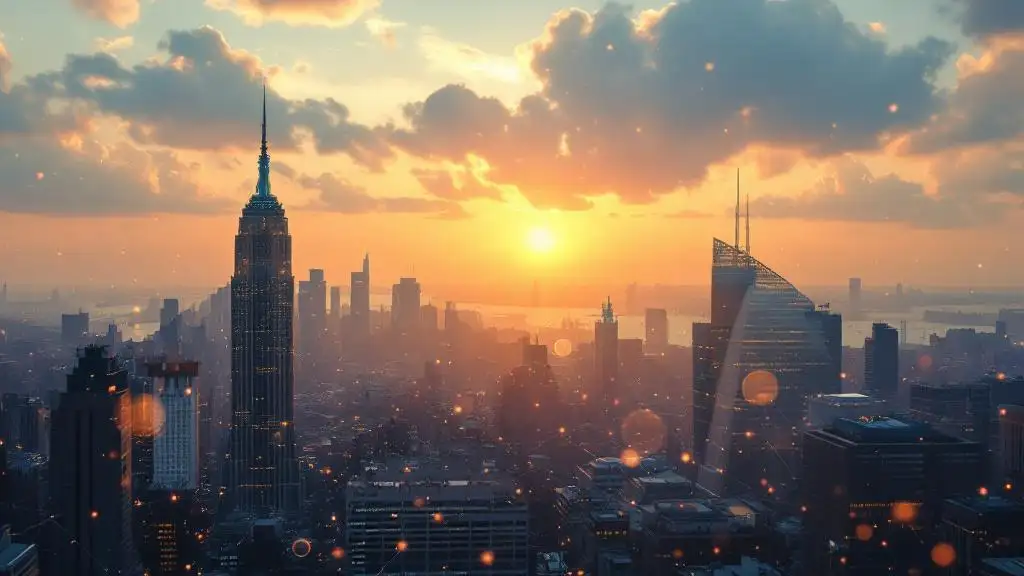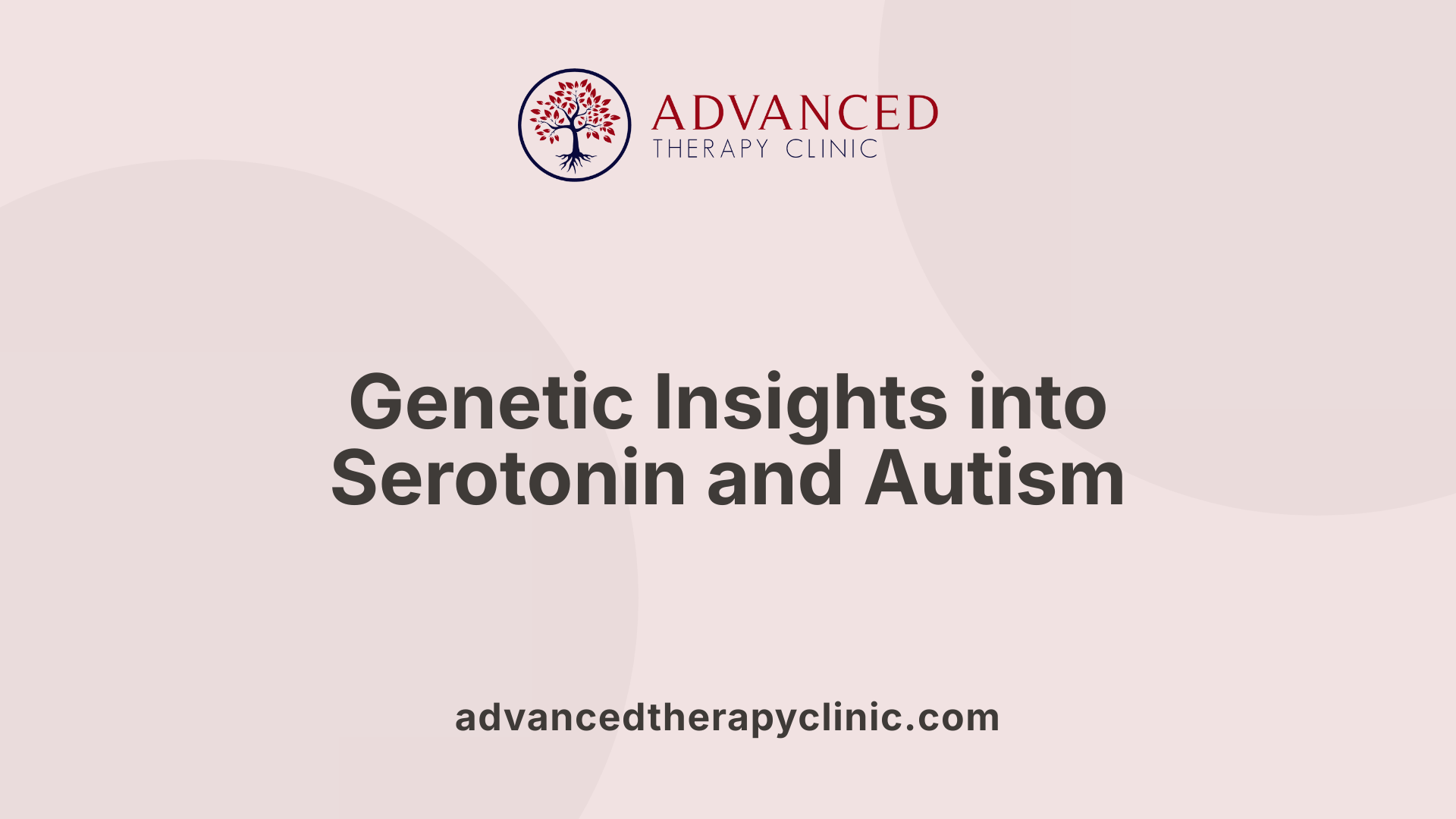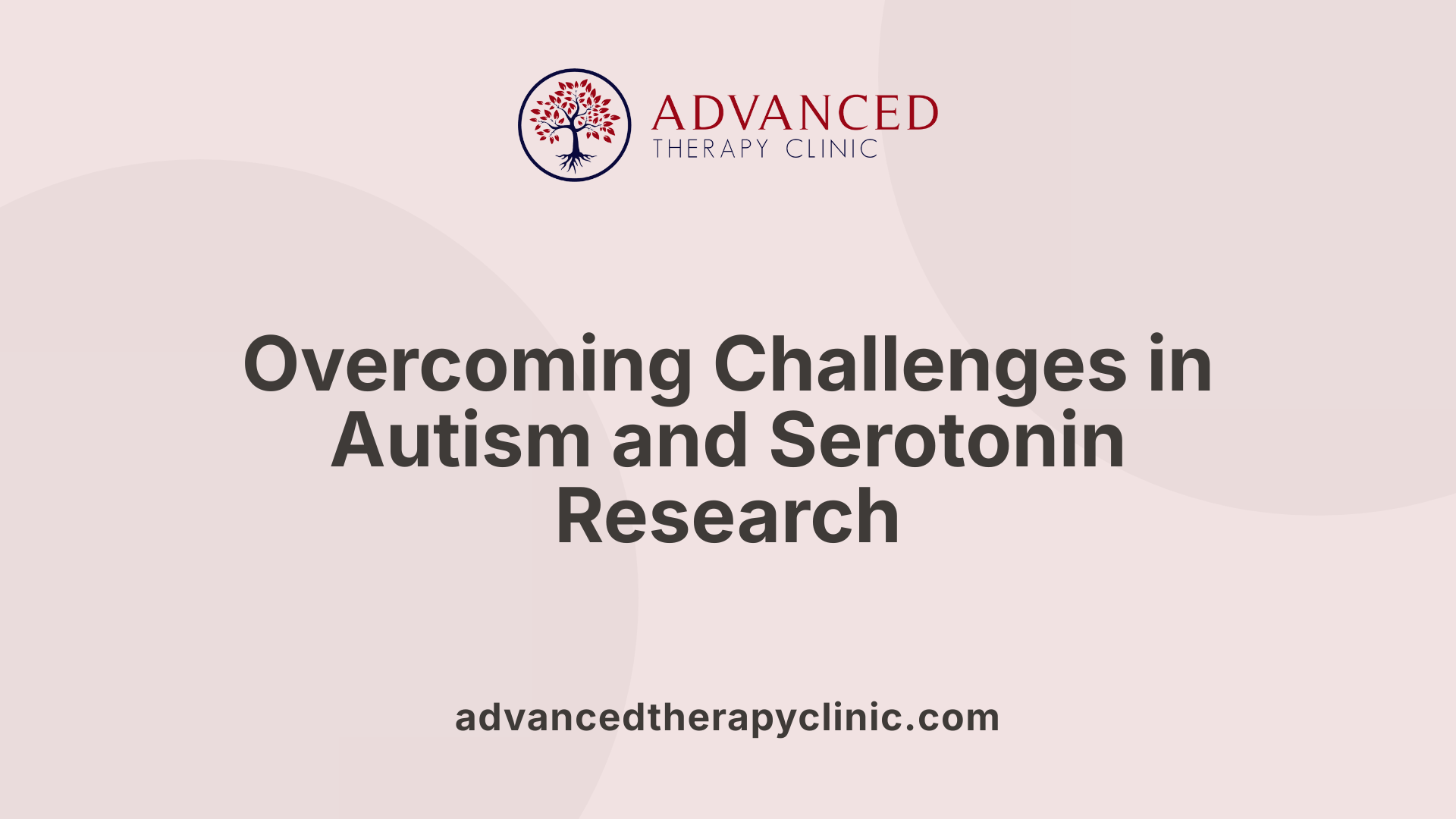Serotonin and Autism


Understanding the Neurochemical Roots of Autism
Recent research has progressively unveiled the complex neurobiological mechanisms underlying autism spectrum disorder (ASD), with serotonin emerging as a key focus. As a neurotransmitter integral to brain development, mood regulation, and gastrointestinal function, serotonin's abnormal levels and functioning have been linked to core ASD symptoms, genetic predispositions, and peripheral manifestations like gastrointestinal issues. This article explores the multifaceted relationship between serotonin and autism, examining biological evidence, genetic insights, animal model findings, and potential therapeutic implications.
Serotonin as a Biomarker and Its Abnormal Levels in ASD

Is there a link between autism and serotonin?
Research has established a neurobiological connection between autism spectrum disorder (ASD) and serotonin levels. About 25% of children with ASD show elevated levels of serotonin in their blood, a condition known as hyperserotonemia. This was the first biomarker identified in ASD, marking a significant milestone in understanding the disorder.
Serotonin influences key processes in neurodevelopment, such as cell proliferation, migration, and differentiation, especially in sensory development. Abnormalities in these pathways can contribute to the behavioral and brain structure irregularities seen in ASD.
Genetic studies also link the serotonin transporter gene (SERT, SLC6A4) to ASD risk and blood serotonin levels, particularly affecting males. Variants in genes related to serotonin transport and receptor function are associated with increased blood serotonin and ASD-related behaviors.
While some research shows high blood serotonin levels, findings about serotonin concentrations within the brain are mixed. Some individuals with ASD exhibit low brain serotonin or altered receptor binding, resulting in complex neurochemical patterns.
Current treatments like selective serotonin reuptake inhibitors (SSRIs) aim to modulate serotonin availability, which can improve certain traits such as repetitive behaviors and social anxiety in some adults. However, their effectiveness varies, illustrating the intricate role of serotonin in ASD.
Blood serotonin levels as diagnostic tools
Blood serotonin, particularly measured in whole blood or platelet-rich plasma, is a promising biomarker for ASD diagnosis and severity assessment. Elevated blood serotonin levels are well-documented and are consistent across different types of autism and Pervasive Developmental Disorders (PDDs).
Approximately 30% of autistic individuals show hyperserotonemia, making it a distinctive feature. Interestingly, higher levels are not observed in individuals with cognitive impairment without ASD, suggesting specificity.
Blood serotonin is primarily produced in the gut and sequestered inside platelets. Abnormalities in the serotonin transporter, which regulate serotonin reuptake, influence blood serotonin levels. Variants that increase transporter activity or mutations affecting related genes can lead to elevated blood serotonin.
Some research shows that elevated blood serotonin correlates with specific behavioral features, such as stereotyped behaviors and social difficulties. Researchers use this marker to support early diagnosis, particularly in severe cases, and to understand the disorder's neurochemical basis.
Variability of serotonin levels in ASD individuals
Despite the general trend of elevated blood serotonin, variability exists among individuals with ASD. Some studies highlight that serotonin levels can fluctuate based on age, sex, severity of autism, and genetic background.
For example, studies on maternal serotonin levels reveal interesting patterns: mothers of children with ASD without rare genetic variants tend to have higher blood serotonin levels, while those with affected children having rare variants show a normal distribution.
Furthermore, research indicates that serotonin levels in the brain and blood may not always align. Some individuals with ASD have lower brain serotonin, which could contribute to social deficits, whereas others have elevated peripheral serotonin.
Large-scale studies and neuroimaging research continue to explore these discrepancies, aiming to clarify serotonin’s precise role in ASD pathogenesis.
Implications for future research and clinical practice
Understanding the nuanced role of serotonin in ASD opens avenues for potential biomarkers and targeted therapies. Measuring blood serotonin levels could facilitate earlier diagnosis and personalized treatment strategies.
Future research aims to clarify how genetic variants influence serotonin regulation during prenatal development, which might affect brain architecture and behavior.
Additionally, longitudinal studies assessing serotonin levels during pregnancy and early childhood are planned, with neuroimaging efforts to correlate neurochemical data with brain structure and function.
Table 1 summarizes the main findings related to serotonin levels in ASD:
| Aspect | Findings | Details |
|---|---|---|
| Blood serotonin prevalence | Approximately 25-30% of individuals with ASD show elevated levels | Consistent across studies, used as a diagnostic marker |
| Genetic associations | Variants in SERT and related genes influence blood serotonin levels | Affect transporter activity, linked to ASD risk |
| Brain serotonin | Altered receptor binding and levels observed in neuroimaging studies | Receptor-specific changes, age-dependent |
| Treatment implications | SSRIs may provide symptom relief, but results vary | Highlights serotonin's complex role in ASD |
| Maternal serotonin impact | Maternal blood serotonin levels may influence autism severity | Lower maternal serotonin linked to more severe autism |
Research continues to unravel how serotonin dysregulation contributes to the diverse features of ASD, emphasizing the importance of this neurotransmitter as a diagnostic and therapeutic target.
Genetic and Biomarker Studies Linking Serotonin in ASD

Are there research findings on serotonin levels in blood and their relation to autism?
Research consistently shows that blood serotonin levels are often abnormal in individuals with autism spectrum disorder (ASD). About 25% of children with ASD have elevated whole blood serotonin, known as hyperserotonemia, which was the first biomarker identified in autism research. Elevated blood serotonin levels suggest dysregulation of serotonin pathways, which influence neurodevelopment and behavior.
Serotonin plays a crucial role in brain development, affecting processes like cell proliferation, migration, and differentiation, especially in sensory development. Abnormal serotonin signaling during fetal development may impact brain circuitry, leading to some autism traits.
Despite the presence of high blood serotonin, studies show that brain serotonin levels can be low or altered, indicating a complex imbalance within different serotonin systems. In adults with ASD, brain imaging studies reveal decreased serotonin transporter (5-HTT) availability in regions like the anterior cingulate cortex, which correlates with impairments in social cognition.
Some treatments, such as selective serotonin reuptake inhibitors (SSRIs), aim to increase serotonin availability at synapses and have been found to help with certain behaviors like repetitive actions and social anxiety in some cases. However, responses vary, reflecting the heterogeneity of serotonin involvement in autism.
In summary, research findings indicate that blood serotonin levels are frequently abnormal in ASD, with elevated levels associated with some behavioral features, highlighting the importance of serotonin in understanding and potentially treating autism.
How do genetic factors and biomarkers relate to serotonin in autism?
Genetics play a significant role in autism spectrum disorder (ASD), with heritability estimates reaching about 83%. Many genes involved in serotonin pathways have been linked to ASD, particularly those affecting the serotonin transporter (SERT, SLC6A4) and related proteins.
Variations in the SERT gene influence transporter activity, which controls serotonin reuptake in neurons and blood platelets. Certain variants increase transporter activity, raising blood serotonin levels while potentially reducing serotonin availability in the brain. This genetic link explains why many autistic individuals exhibit hyperserotonemia.
Research on blood biomarkers supports these genetic findings. For instance, elevated blood serotonin is more common in individuals without rare genetic variants related to autism, while those with rare variants tend to have normal or variable blood serotonin levels.
Mutations in genes such as SLC29A4, which encodes the plasma membrane monoamine transporter (PMAT), further affect serotonin homeostasis. Some rare variants in SLC29A4 impair transporter function, causing altered serotonin clearance and contributing to neurodevelopmental differences seen in ASD.
Genetic profiles also influence receptor functioning. For example, receptor-specific alterations in serotonin receptors, observed through neuroimaging and postmortem studies, suggest that receptor dysregulation adds to the neurochemical complexity in ASD.
Altogether, genetic factors and biomarkers including serotonin levels and transporter gene variants provide critical insight into the biological underpinnings of autism. They help elucidate how genetic differences affect serotonin regulation, brain development, and behavioral outcomes.
| Aspect | Findings | Implications |
|---|---|---|
| Blood serotonin levels | 25% of ASD children show hyperserotonemia | Potential biomarker for diagnosis and severity |
| SERT gene variants | Increase transporter activity, linked to blood serotonin levels | Genetic influence on serotonin dysregulation |
| SLC29A4 mutations | Rare variants impair serotonin transport, affecting neurodevelopment | New genetic markers for ASD |
| Serotonin receptors (e.g., 5-HT2) | Receptor-specific alterations observed, age-dependent | Targets for tailored pharmacotherapy |
| Brain serotonin transporter (5-HTT) | Lower availability in autistic adults, correlating with social cognition deficits | Biomarkers for neurobiological severity |
This comprehensive understanding of the genetic and biomarker landscape involving serotonin in ASD advances both diagnostic efforts and the development of targeted treatments. As research progresses, integrating genetic testing and biomarker analysis could enhance early detection and personalized intervention strategies.
Serotonin’s Role in Brain Development and ASD Symptoms
What is the role of serotonin in autism spectrum disorder symptoms and development?
Serotonin is a crucial neurotransmitter involved in numerous aspects of brain function, including mood regulation, sleep, appetite, and social behaviors. During fetal development, serotonin helps neurons in the brain form and connect, shaping neural circuits essential for future behavior and cognition.
In individuals with autism spectrum disorder (ASD), abnormalities in serotonin levels—particularly elevated blood serotonin levels, or hyperserotonemia—are common. About a quarter of individuals with ASD exhibit high blood serotonin, which was the first biomarker identified in autism research. These elevated levels are thought to impact early neurodevelopmental processes, such as cell proliferation, migration, and differentiation.
Research shows that alterations in the serotonin system, including genetic variants that increase transporter activity, can result in high blood serotonin but low brain serotonin. This imbalance may lead to disrupted neural connectivity, affecting behaviors like social interaction and repetitive actions, which are core features of ASD.
Treatments like selective serotonin reuptake inhibitors (SSRIs) aim to modify serotonin availability and can help with specific symptoms such as repetitive behaviors and social anxiety, especially in adults. However, responses vary, reflecting the complexity of serotonin’s role.
In sum, serotonin influences the formation and functioning of neural circuits that underpin many ASD characteristics. Understanding these mechanisms can aid in developing targeted therapies and early interventions.
How do animal models and scientific research explore serotonin’s role in autism?
Animal models have been pivotal in uncovering how serotonin impacts ASD development. Researchers manipulate serotonergic pathways in animals by altering gene expression, receptor activity, or transporter function.
For example, mice engineered with the SERT gene variant (Gly56Ala) mimic hyperserotonemia and show behaviors relevant to ASD, such as social deficits and repetitive actions. Blocking or enhancing serotonin signaling in these models influences behaviors, neuroanatomy, and circuitry, providing a window into how disruptions in serotonin contribute to autism-like features.
Studies using SERT knockout mice or variants in enzymes involved in serotonin synthesis, like tryptophan hydroxylase, demonstrate that altered serotonin levels can lead to anxieties, social impairments, and stereotyped behaviors.
Furthermore, pharmacological experiments with SSRIs or serotonin precursors in animals help decipher the pathways through which serotonin affects brain development and behavior. These investigations highlight how serotonergic dysfunction during critical developmental periods may lead to ASD.
Animal research also explores interconnected systems, such as how serotonin interacts with neuropeptides like oxytocin, known for promoting social bonding. Disruptions in these systems reinforce the neurobiological complexity of ASD.
Overall, animal studies clarify the molecular and neural circuit mechanisms by which serotonin alterations can generate behaviors and brain changes embodying ASD traits. These models are essential for testing new therapeutic approaches targeting serotonergic pathways, paving the way for potential clinical applications.
Implications for Treatment and Therapeutic Strategies Targeting Serotonin

What are the potential implications of serotonin research for autism treatments?
Research into serotonin's role in autism spectrum disorder (ASD) has uncovered its influence on numerous aspects of neurodevelopment and behavior. Abnormal serotonin levels—such as elevated blood serotonin in about 25% of individuals with ASD—and genetic variations in the serotonin transporter (SERT) and receptor genes have been widely documented. These findings imply that targeting serotonergic pathways could modify core symptoms like social deficits, repetitive behaviors, and sensory sensitivities.
Understanding how serotonin influences brain development leads to the exploration of drugs that can adjust its action. For example, selective serotonin reuptake inhibitors (SSRIs) are used to increase serotonin availability in synapses, aiming to reduce anxiety, repetitive actions, and improve mood in some ASD patients. However, clinical outcomes have been mixed, highlighting the complexity of serotonin's role in the disorder.
More recent research debates the efficacy of broad-spectrum serotonergic drugs and shifts focus toward receptor-specific interventions. Drugs targeting serotonergic receptor subtypes, such as 5HT2A and 5HT7R, are being investigated to produce more precise effects on neural circuits involved in social behavior and cognition.
Oxytocin, a neuropeptide heavily involved in social bonding and empathy, shows promising adjunctive potential. Studies indicate that lower levels of oxytocin correlate with social deficits in ASD, and administering oxytocin can enhance social cognition and communication skills.
Emerging therapies aim to modulate serotonergic and related neurochemical pathways more specifically. These include newer receptor-specific drugs, microbiome-targeted interventions influencing gut serotonin, and gene-based approaches to correct transporter abnormalities.
Despite these advances, significant challenges remain. The neurochemical heterogeneity among ASD individuals means that a treatment effective for one person might not work for another. Variations in serotonin levels, receptor expression, genetic background, and comorbidities necessitate personalized approaches.
| Treatments | Type | Target / Effect | Current Status | Challenges |
|---|---|---|---|---|
| SSRIs | Medication | Serotonin reuptake inhibition | Widely used | Mixed effectiveness, side effects |
| Receptor-specific drugs | Experimental | 5HT2A, 5HT7R | Under study | Need for personalized targeting |
| Oxytocin | Peptide | Social behavior modulation | Clinical trials show promise | Variability in response |
| Gut microbiome interventions | Emerging | Gut serotonin pathways | Early-stage studies | Understanding long-term impacts |
This evolving landscape suggests that future treatments will likely involve a combination of neurochemical, genetic, and behavioral strategies tailored to individual profiles. The hope is to refine these approaches to improve outcomes and quality of life for those with ASD.
Serotonin, the Gut-Brain Axis, and Gastrointestinal Comorbidities in Autism

Is there a link between serotonin levels and gastrointestinal disorders often associated with autism?
Research has established a significant connection between serotonin and gastrointestinal (GI) issues in individuals with autism spectrum disorder (ASD). About 4 times more common in people with autism than in neurotypical individuals, GI problems such as constipation, diarrhea, and abdominal pain are frequent comorbidities.
Serotonin plays a crucial role in regulating gut functions, including motility, secretion, and sensation. Interestingly, approximately 95% of the body’s serotonin resides in the gut, where it is primarily produced by enterochromaffin cells. Abnormal serotonin signaling in the gut can lead to disrupted motility and secretion, contributing to GI symptoms commonly seen in ASD.
Alterations in the serotonin transporter gene (SERT), which controls serotonin reuptake, have been linked with both high blood serotonin levels and GI disturbances in autism. Overexpression of SERT may increase serotonin sequestration in platelets, reducing its availability in the brain but heightening peripheral serotonin activity, which can impact bowel function.
Studies show that in ASD, abnormal gut serotonin may influence not just GI symptoms but also behavioral aspects via the gut-brain axis. For example, dysregulated serotonin signaling in the gut can affect microbial composition and permeability, potentially exacerbating neurobehavioral symptoms.
Role of gut microbiome in serotonin signaling
The gut microbiome — the complex community of microorganisms in the intestines — is integral to serotonin production and regulation. Microbial populations influence serotonin synthesis by enterochromaffin cells. Certain bacteria can stimulate or inhibit serotonin production, affecting both gut and brain functions.
In children with autism, microbiome analyses reveal distinct bacterial communities compared to neurotypical children. These differences can alter serotonin pathways, influencing gastrointestinal symptoms and, possibly, neurodevelopmental trajectories.
Peripheral serotonin production and regulation
Peripheral serotonin is primarily synthesized in the gut from the amino acid tryptophan. Its levels are tightly controlled by the serotonin transporter (SERT), which regulates its reuptake into cells and storage in platelets. Variants in the gene encoding SERT can lead to excessive or insufficient serotonin in the gut, impacting motility and secretion.
In ASD, certain genetic mutations affecting this system may result in increased gut serotonin but decreased brain serotonin, suggesting an imbalance that contributes to both GI symptoms and neurobehavioral features.
Impact of serotonin on gut motility and secretion
Serotonin acts on various receptors in the gut, notably 5-HT3 and 5-HT4 receptors, to modulate motility and secretion. Elevated serotonin levels can accelerate transit time or cause constipation, while decreased levels can slow gut motility, leading to diarrhea.
Animal studies with modified serotonin signaling show that altering serotonin levels affects behaviors related to ASD. For example, mice with SERT overexpression display both GI and behavioral abnormalities similar to ASD.
Microbiome-gut-brain interactions influencing ASD symptoms
The interaction between the gut microbiome, serotonin signaling, and brain function forms a complex network affecting ASD symptoms. Disruption in one system can influence the others. Microbial products like short-chain fatty acids can influence serotonin synthesis and release, thereby affecting gut motility and neurobehavior.
Moreover, immune responses triggered by microbiome alterations may also impact neural development and function, adding another layer of complexity.
Fecal microbiota transplants and gut health improvements
Emerging clinical trials and studies indicate that fecal microbiota transplantation (FMT) can improve GI symptoms and behaviors in children with ASD. FMT aims to restore a healthy gut microbiome balance, which can modulate serotonin production, reduce inflammation, and enhance gut barrier function.
Small studies have observed reductions in GI issues and improvements in behavioral measures during and after FMT treatments, highlighting its potential as a therapy targeting the gut-brain axis.
| Aspect | Role in Autism | Microbiome Connection | Potential Interventions |
|---|---|---|---|
| GI issues prevalence | Up to 4 times more common | Dysbiosis affects serotonin signaling | Dietary modification, probiotics, FMT |
| Serotonin production | Regulates gut motility and secretion | Microbes influence serotonin synthesis | Microbiome-targeted therapies |
| Gut-brain interaction | Influences ASD behaviors | Gut microbiota affect brain via serotonin | Microbiome modulation, microbiota-based therapies |
| Current research | Focus on microbiome and serotonin pathways | Promising results from FMT | Antibiotics, probiotics, diet adjustments |
Understanding the interplay between serotonin, gut microbiota, and gastrointestinal health offers promising avenues for improving quality of life in individuals with ASD. Investigating these connections further can lead to new, targeted treatments that address both behavioral and physical symptoms.
Neuroimaging, Brain Connectivity, and Serotonergic Abnormalities in ASD
How do neuroimaging and neural circuitry studies link serotonin to autism?
Recent neuroimaging research highlights a complex relationship between serotonin systems and brain development in individuals with autism spectrum disorder (ASD). Studies using positron emission tomography (PET) and other imaging techniques demonstrate that serotonergic abnormalities are associated with observable changes in brain structure and function.
A significant finding is that serotonin transporter (5-HTT) availability is markedly reduced in the total gray matter of adults with ASD. These decreases are particularly prominent in regions like the anterior cingulate cortex, a critical area involved in social cognition and emotional regulation. The reduction in transporter availability suggests altered serotonergic signaling, which may disrupt neural communication pathways.
Neuroimaging shows that these serotonergic disturbances correlate with impairments in brain connectivity. Structural and functional connectivity anomalies can underlie some core symptoms of ASD, especially difficulties with social interaction and communication.
In addition to transporter changes, receptor binding differences have been documented. Specifically, the 5HT2A receptor, an important serotonin receptor subtype involved in modulating mood and perception, exhibits altered binding in individuals with ASD. These receptor variations further suggest that serotonergic dysregulation influences brain maturation and neural circuitry development.
Correlations between serotonin system measures and behavioral assessments provide compelling evidence. For example, lower 5-HTT availability in the anterior cingulate cortex has been linked to poorer performance on social cognition tasks such as the 'Reading the Mind in the Eyes' test. This association underscores the role of serotonergic pathways in shaping social understanding and empathetic abilities.
These neuroimaging findings collectively support the hypothesis that abnormalities in serotonin signaling are not only biochemical alterations but also manifest as structural and functional changes in the brain. Such insights are valuable for developing targeted therapies and biomarkers for early detection of ASD.
| Aspect | Neuroimaging Finding | Brain Regions Involved | Behavioral Correlates |
|---|---|---|---|
| Serotonin transporter availability | Significantly reduced | Total gray matter, anterior cingulate cortex | Impaired social cognition, lower performance on social tasks |
| Receptor binding | Altered 5HT2A receptor binding | Frontal and other cortical regions | Mood regulation, perception differences |
| Brain connectivity | Disrupted neural networks | Various, including social and emotional regulation areas | Social and communication deficits |
Understanding these neural correlates enhances our ability to identify specific targets for intervention and improves our comprehension of how serotonergic systems influence ASD development.
Current Research Challenges and Future Directions in Serotonin and Autism

What are the current scientific understandings, research challenges, and ongoing studies on serotonin’s role in autism?
Research indicates that serotonin plays a pivotal role in the neurobiology of autism spectrum disorder (ASD). Elevated blood serotonin levels, found in approximately 25% of individuals with ASD, were among the first biomarkers discovered in autism research. These hyperserotonemia levels are mainly controlled by the serotonin transporter gene (SERT), which has strong genetic ties to ASD, especially in males. Animal studies, including genetically modified mouse models, have demonstrated that alterations in the serotonin system can lead to behaviors that resemble ASD symptoms, such as impaired social interactions and repetitive behaviors.
In addition to blood-based findings, neuroimaging studies reveal that individuals with ASD often exhibit altered serotonin transporter (5-HTT) availability in specific brain regions, such as the anterior cingulate cortex and neocortex. Reduced 5-HTT in these areas correlates with challenges in social cognition, highlighting the influence of serotonergic abnormalities on social functioning.
Simultaneously, research has uncovered complex interactions between serotonin and other neuropeptides like oxytocin, which is known for its role in social bonding. Interestingly, oxytocin treatments have been shown to improve social cognition in ASD, suggesting that multiple neurotransmitter systems are involved.
Despite these advancements, several challenges persist. The heterogeneity of ASD poses a major obstacle, as neurochemical and behavioral profiles can vary widely among individuals. Some children and adults with ASD exhibit low brain serotonin or altered receptor binding, whereas others have normal or elevated levels, complicating the understanding of causality.
Current studies also grapple with limitations related to biomarkers. Blood serotonin levels, while useful, do not directly reflect central nervous system activity. Moreover, most data are cross-sectional, limiting insights into how serotonergic abnormalities develop over time or influence neurodevelopmental trajectories.
Ongoing research efforts aim to fill these gaps by employing longitudinal designs and advanced models such as brain organoids to simulate neurodevelopmental processes. Genetic studies continue to explore variants associated with serotonin regulation, such as those in SLC6A4 and ITGB3, which may influence blood serotonin levels and ASD risk.
Additionally, investigations into the gut-brain axis reveal that peripheral serotonin produced in the gut can impact neural development and behavior. Microbiome analyses and fecal transplant trials are part of novel efforts to understand how gut bacteria influence serotonin levels and ASD symptoms.
Furthermore, personalized medicine approaches are gaining traction. By integrating genetic, neurochemical, microbiome, and neuroimaging data, researchers hope to develop targeted therapies that address specific neurobiological profiles in ASD individuals.
Overall, current research underscores a complex interplay between serotonin, genetics, microbiota, and neural circuitry. Future studies focusing on developmental changes, causal mechanisms, and individualized treatments are vital to translating these scientific insights into effective interventions for ASD.
Looking Ahead in Serotonin and Autism Research
As scientific research continues to evolve, the intricate relationship between serotonin pathways, genetic factors, and environmental influences becomes clearer. Understanding these interactions offers promising avenues for early diagnosis, personalized treatments, and possibly even preventive strategies in autism spectrum disorder. The integration of neuroimaging, genetic biomarker development, and advanced animal models fosters hope for more targeted and effective interventions, ultimately improving quality of life for individuals with ASD and their families. Continued interdisciplinary efforts remain essential to unravel the complex neurochemical landscape of autism and harness the full potential of serotonin-related insights.
References
- The serotonin system in autism spectrum disorder: from biomarker to ...
- Serotonin's link to autism, explained - The Transmitter
- Oxytocin and serotonin in the modulation of neural function - Frontiers
- Shedding Light on the Link between Maternal Serotonin and Autism
- Serotonin transporter availability in adults with autism—a positron ...
- Study sheds new light on autism, but there's more work to be done
- Brain Serotonin and Dopamine Transporter Bindings in Adults With ...
- Serotonin and serotonin transporter levels in autistic children - PMC
- Blood serotonin levels in autism spectrum disorder: A systematic ...
Recent articles

Expressive Speech Delay 2-Year-Old
Understanding and Addressing Expressive Speech Delay in Toddlers

How Speech Recognition Works
Unlocking the Power of Speech Recognition in Therapy and Healthcare

Autism and Head Size
Understanding the Complex Relationship Between Autism and Head Size

Occupational Therapy in Autism
Enhancing Independence and Quality of Life Through Occupational Therapy in Autism

Do Autistic People Understand Sarcasm?
Navigating the Nuances: Understanding Sarcasm and Social Communication in Autism

Autism Routines
Crafting Effective Daily Structures for Children with Autism

